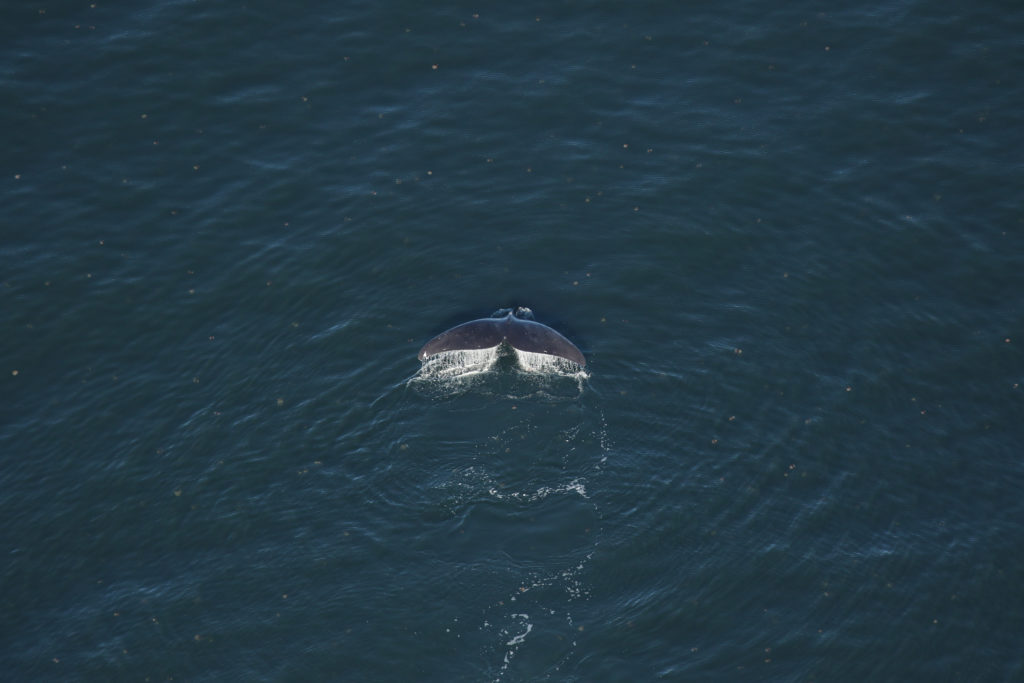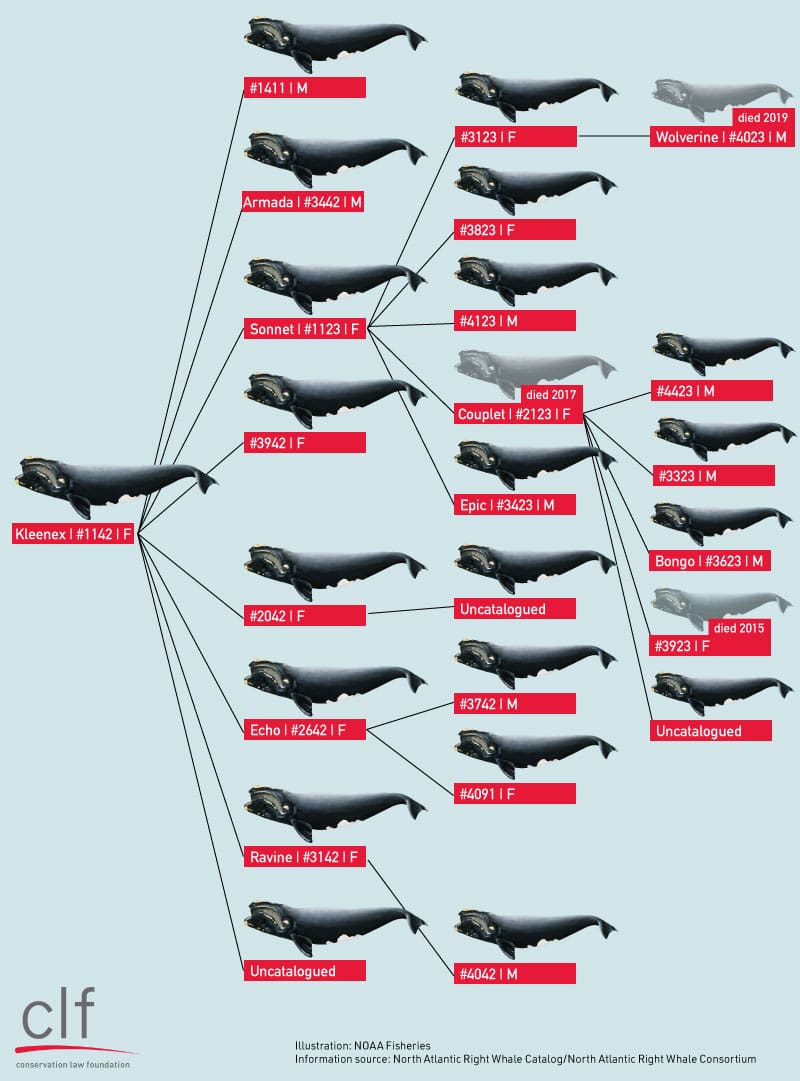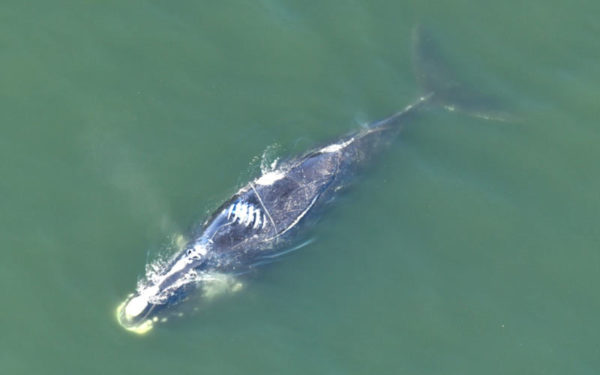
Every right whale is part of a family, and each whale death this year means families lost mothers, fathers, siblings, and grandchildren. Photo: Florida Fish and Wildlife Conservation Commission
At a time when even one right whale death is a tragedy, we are mourning the loss of 10 whales this year. It’s a devastating blow for the critically endangered species. This year’s death toll now surpasses the number of calves whose births we celebrated just months ago.
One of the whales who died was a nine-year-old named Wolverine. He was all too familiar with the dangers threatening his species’ existence. The young whale got his name from three slash-like scars on his tale, a grim reminder of an encounter with a ship’s propeller when he was barely a year old. The parallel scars reminded the researchers who named him of the X-Men character’s signature claw marks. Wolverine had also endured the pain and stress of three entanglements in fishing gear during his short life.
But Wolverine sadly didn’t have his namesake’s superhuman ability to heal himself again and again. As one of nine right whales that died this summer in the Gulf of St. Lawrence, his death was a loss to a species with barely 400 whales left on the planet – and a tragic reminder that, without immediate action, North Atlantic right whales may pass the point of no return in our lifetimes.
Every Whale Is Part of a Family
Each right whale is part of a family tree that’s losing branches. Four of the whales who died this summer were sexually mature females. Punctuation, also named for the scars on her back, was a mother to at least eight calves and a grandmother to at least two grand-calves. Another unnamed female had just reached maturity.
But the human threats that endanger right whales impact them indirectly as well as killing them outright. Right whale mothers give birth to a single calf at a time. In the past, a healthy female would calve every three to four years, meaning she could give birth to many calves in her 80 plus year lifetime.
However, today, many mothers only calve every nine to ten years, cutting the birth rate in half. Scientists believe the stresses females face from human activities in the ocean are leaving little energy to birth and care for a calf. Whales that survive a ship strike are weakened, while others become exhausted from the pain of dragging heavy fishing gear wrapped around their bodies – sometimes for thousands of miles.
In 2017, we were alarmed that 17 adult whales died, and no calves were born in the winter of 2017/2018. This year, seven calves were born, but that low birth rate is not enough to sustain the species, let alone help it recover.
Humans are the Threat – and the Solution – to the Right Whale’s Survival
Ship strikes and gear entanglements account for about 90 percent of all right whale deaths and 100 percent of adult and juvenile deaths. Every single whale that died this summer had been entangled at least once before.
Humans caused the right whale’s plight. But it’s also within our power to save them. We know what the solutions are, and we can start making changes today. We need to:
- Implement mandatory speed restrictions in areas where whales are sighted and known to gather;
- Close new areas to fishing gear where right whales feed and socialize to reduce the risk of painful and deadly entanglements;
- And incentivize testing and using new ropeless fishing gear to eliminate dangerous lines from the water.
Canada took some steps toward these necessary actions, but clearly, they were not enough this summer. We continue to urge Canada to do more.
Here in the U.S., the federal government recently held public hearings to identify measures that will ultimately reduce the risk of entanglement. But it should not drag its feet on the changes it could make right now as interim measures while the more formal rulemaking process plays out.
The longer we wait to act, the more right whale families will lose mothers, fathers, siblings, and grandchildren.
A Right Whale Family Tree
Wolverine was part of a long family tree headed by Kleenex, a famous right whale matriarch who has eight calves, nine grandcalves, and six great-grandcalves. She is the mother, grandmother, and great-grandmother of 5 percent of the entire North Atlantic right whale population. Kleenex hasn’t been seen since last spring when an entanglement team partially freed her from fishing gear she had been dragging for three years.
Kleenex, who is estimated to be about 50 years old, has given birth to more calves than most whales of her generation. Calving mothers like her are crucial to the right whales’ survival.
Here is Kleenex’s – and Wolverine’s – family tree:




